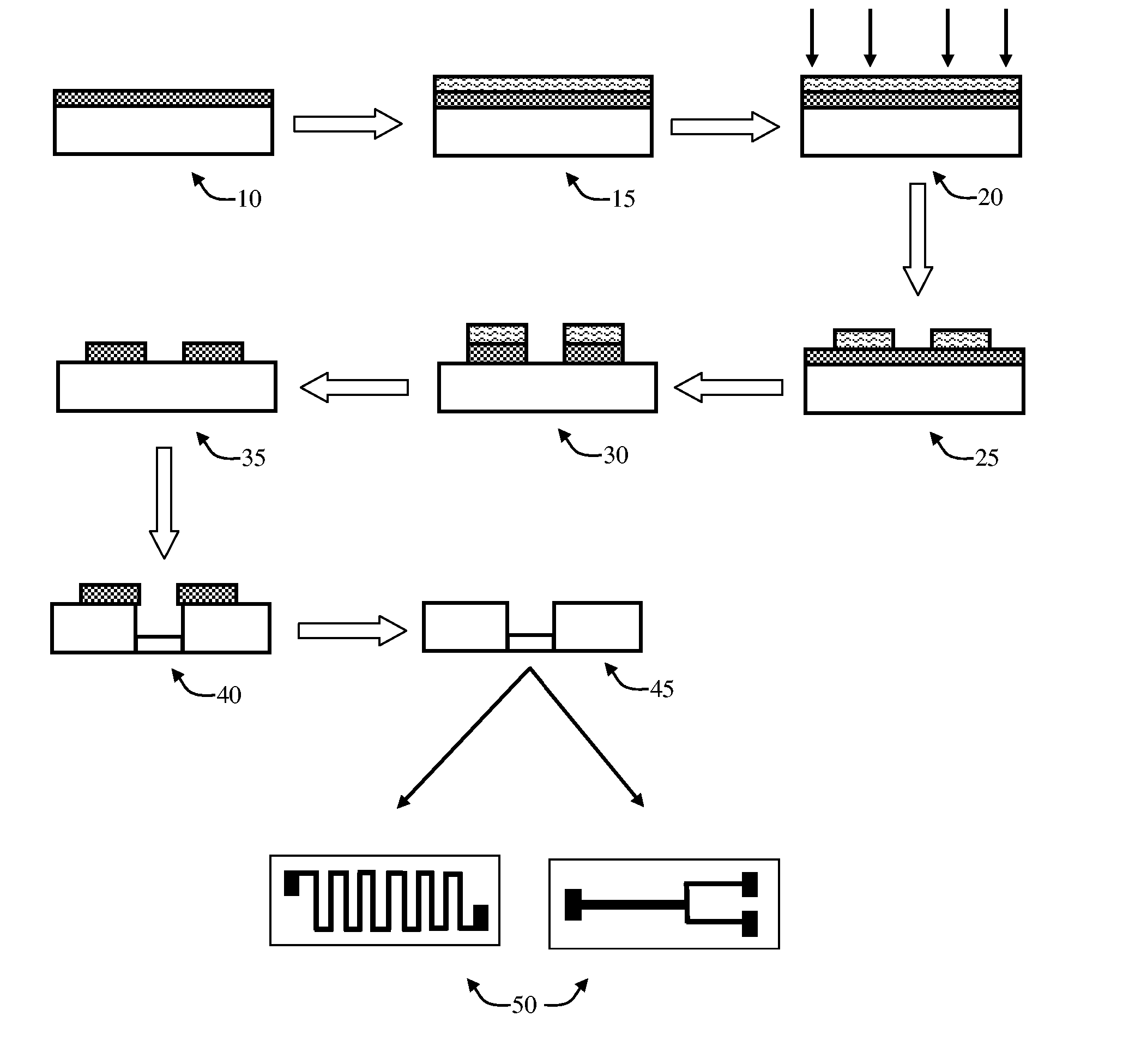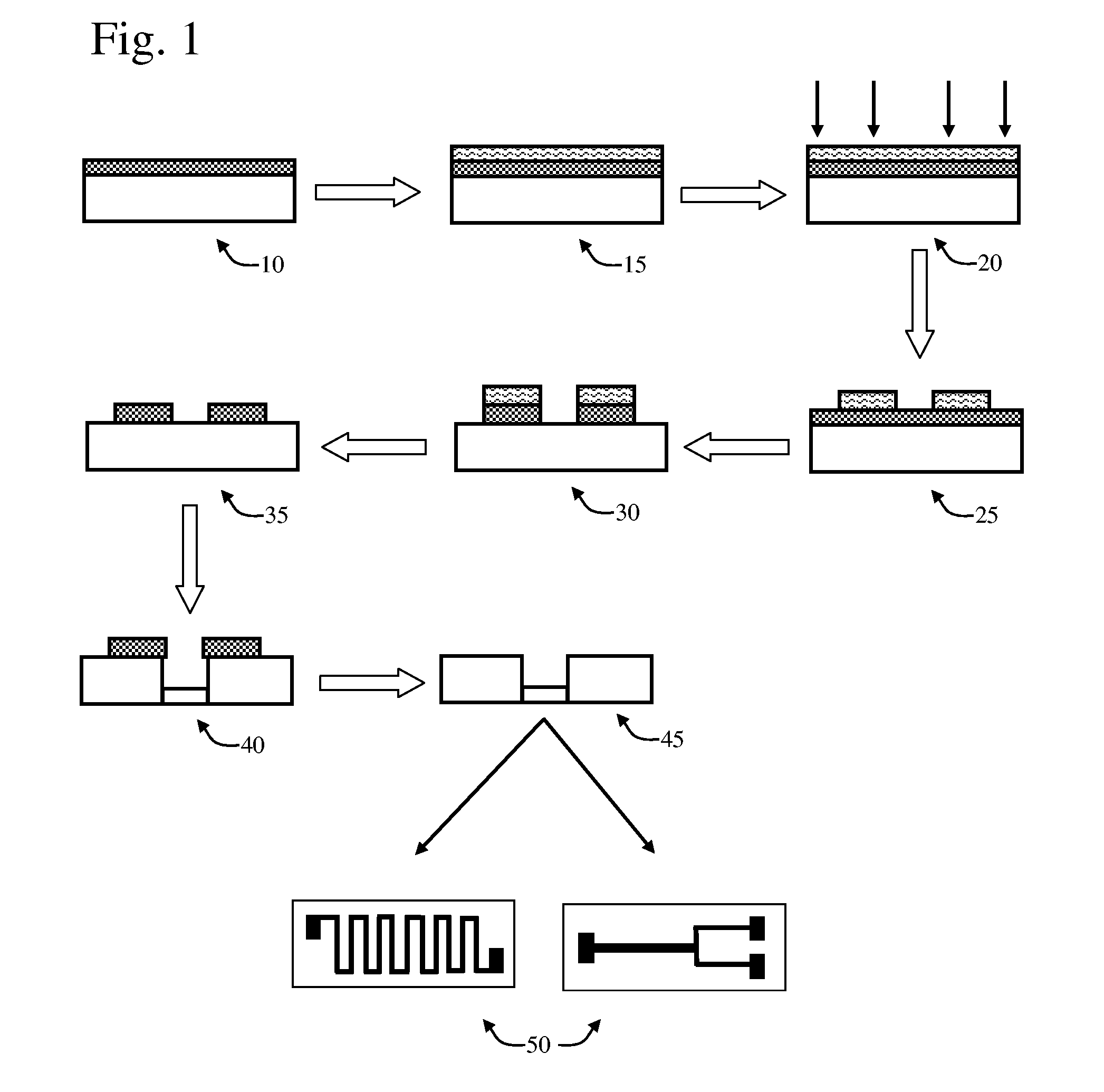Method for Etching Microchannel Networks within Liquid Crystal Polymer Substrates
a technology of liquid crystal polymer substrates and microchannel networks, which is applied in the direction of etching metal masks, crystal growth processes, lithographic masks, etc., can solve the problems of increasing the cost of finer dimensional control, increasing the cost of electrical circuits, and warranting the increase of the cost associated with their manufactur
- Summary
- Abstract
- Description
- Claims
- Application Information
AI Technical Summary
Benefits of technology
Problems solved by technology
Method used
Image
Examples
Embodiment Construction
[0027] The method in accordance with the present invention is outlined as shown with reference to FIG. 1. The illustrated process of FIG. 1 demonstrates the process flow for the preparation of a microfluidic device utilizing a liquid crystal polymer (LCP) / copper laminate as the starting material in accordance with the present invention.
[0028] With reference to FIG. 1, in an exemplary embodiment the method of the present invention includes the steps of applying a copper layer to a liquid crystal polymer layer to form a copper clad liquid crystal polymer substrate 10, applying a patterned photoresist to the copper clad liquid crystal polymer substrate 15, wherein the patterned photoresist defines a desired microchannel network, exposing the patterned photoresist to a light source 20, developing the exposed patterned photoresist 25, etching the copper layer of the copper clad liquid crystal polymer substrate to expose the liquid crystal polymer layer of the substrate 30, removing the ...
PUM
| Property | Measurement | Unit |
|---|---|---|
| size | aaaaa | aaaaa |
| depth | aaaaa | aaaaa |
| liquid | aaaaa | aaaaa |
Abstract
Description
Claims
Application Information
 Login to View More
Login to View More - R&D
- Intellectual Property
- Life Sciences
- Materials
- Tech Scout
- Unparalleled Data Quality
- Higher Quality Content
- 60% Fewer Hallucinations
Browse by: Latest US Patents, China's latest patents, Technical Efficacy Thesaurus, Application Domain, Technology Topic, Popular Technical Reports.
© 2025 PatSnap. All rights reserved.Legal|Privacy policy|Modern Slavery Act Transparency Statement|Sitemap|About US| Contact US: help@patsnap.com


